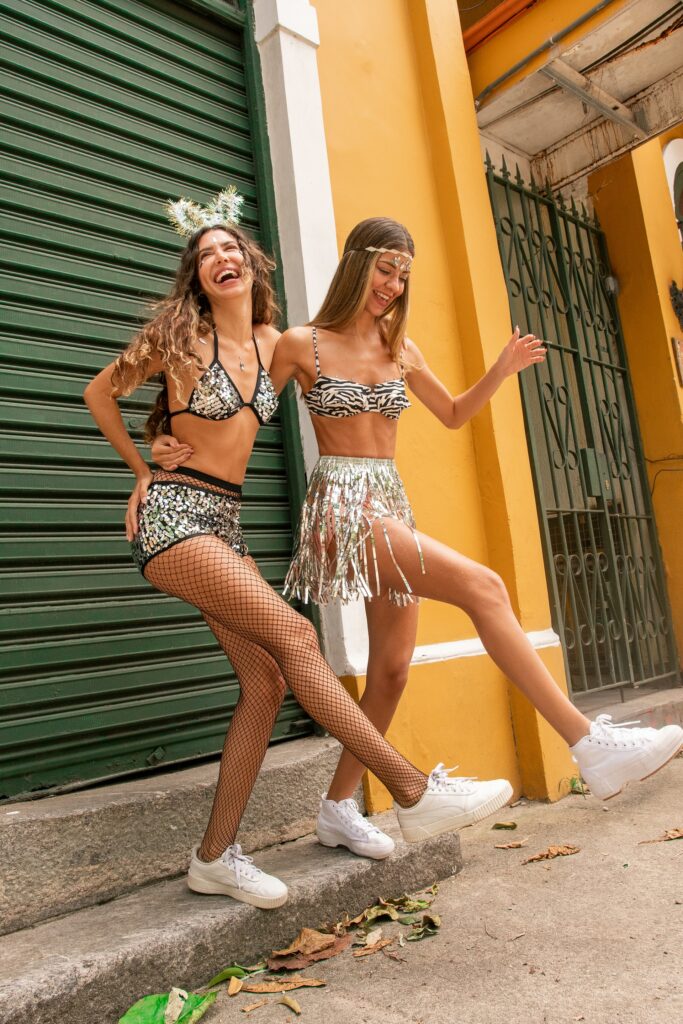In an era where the clarion call for sustainability rings louder than ever, the question of whether fancy dress can align with eco-friendly practices is, whilst admittedly a niche concern, also a pertinent one.
Fancy dress parties, a staple of British social life, from Halloween soirees to Christmas festivities, often involve costumes that are worn once and then discarded, contributing to the ever-growing pile of waste. But as the world becomes increasingly conscious of the environmental impact of our choices, can fancy dress ever be truly sustainable?
The Challenge Of Sustainability In Fancy Dress
The fancy dress industry is emblematic of the ‘throwaway’ culture that has permeated modern fashion. Costumes are often made from cheap, non-biodegradable materials such as polyester, which is derived from petroleum, and are designed for limited use. After a single outing, these garments frequently end up in landfill, where they take hundreds of years to decompose, releasing harmful microplastics into the environment.
Moreover, the production of these costumes is resource-intensive, involving significant water consumption and the emission of greenhouse gases.
The primary challenge in making fancy dress sustainable lies in the nature of the costumes themselves. Often made from cheap, non-biodegradable materials like polyester, PVC, and nylon, these outfits are designed for short-term use and long-term persistence in landfills. The production processes involved are also resource-intensive, involving significant water usage and the emission of greenhouse gases.
Moreover, the culture of single-use that pervades the fancy dress industry exacerbates the problem. The pressure to sport a new and unique outfit for each event leads to a cycle of consumption and disposal that is antithetical to sustainability.

Towards A Greener Masquerade: Steps To Sustainability
Despite these challenges, there are several ways in which fancy dress can become more sustainable. Here are some strategies that can be employed:
Eco-Friendly Materials
The use of sustainable materials, both in women’s and men’s fancy dress, is the first step towards greener costumes. Organic cotton, hemp, and bamboo fabrics offer renewable alternatives that are less taxing on the environment. These materials are not only biodegradable but also often produced in a more environmentally friendly manner.
Costume Rental & Sharing
Costume rental services are a fantastic way to reduce waste. By renting a costume, you’re participating in a circular economy that values reuse over disposal. Similarly, sharing and swapping costumes with friends or through community platforms can extend the life of a costume and reduce the need for new purchases.
DIY & Upcycling
Creating costumes from existing materials or upcycling old outfits encourages a more sustainable approach to fancy dress. It not only reduces waste but also fosters creativity, allowing individuals to craft unique costumes that can be tailored to fit perfectly, both in style and conscience.


Second-Hand & Vintage Options
Vintage shops and second-hand stores are treasure troves for sustainable costume hunters. Not only do they offer one-of-a-kind pieces with authentic flair, but purchasing from these sources also supports the reuse of garments, keeping them out of the waste stream and helping consumers, to an extent, bid farewell to fast fashion.
Sustainable Costume Companies
A growing number of companies are recognising the demand for sustainable fancy dress options and are responding accordingly. These businesses focus on ethical production practices, sustainable materials, and creating high-quality costumes designed for longevity.
Mindset Shift
Perhaps the most crucial element in the quest for sustainable fancy dress is a change in mindset. Moving away from the disposable culture and towards an appreciation for quality and reuse is essential. This shift can be encouraged through education and the promotion of sustainable practices within the industry.
The Role of Consumers & Manufacturers
Consumers have the power to drive change through their purchasing choices. By opting for sustainable options and demanding better practices from manufacturers, they can push the industry towards a greener future.
Manufacturers, on the other hand, have a responsibility to innovate and provide sustainable options. This includes investing in eco-friendly materials, improving production processes, and designing costumes with a longer lifespan.
The Bottom Line
The journey towards sustainable fancy dress is undoubtedly fraught with challenges, but it is not an impossible one. Through a combination of material innovation, a culture of sharing and reuse, and a collective commitment to change, fancy dress can indeed align with the principles of sustainability.
As society continues to evolve and prioritise the health of our planet, the fancy dress industry must adapt. By embracing sustainability, it can ensure that the joy and creativity of dressing up do not come at the expense of the environment. The question is not whether fancy dress can be truly sustainable, but rather how quickly we can make it a reality.





